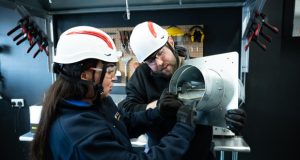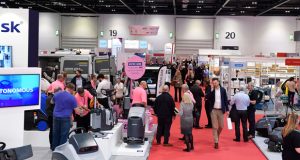Hospitals could save more than a billion euros a year in medical and hygiene costs by switching to a new synbiotic cleaning product, which coat surfaces with live probiotics to actively fight off bacteria, instead of using traditional disinfectants.
Researchers found that where the product was used, Hospital Acquired Infections (HAIs) fell, saving cash as fewer patients became infected and required treatment. Whilst savings were also made on cleaning costs because the symbiotic products do not need regular reapplications like conventional rivals.
The Organisation for Economic Cooperation and Development (OECD) estimates that around 2.4 million people could die in Europe, North America and Australia between 2015 and 2050 due to so called “superbug infections” (microorganisms that develop strong antimicrobial resistance or AMR) and experts predict that by 2050 there will be 10 million deaths a year due to AMR globally, costing up to US$100 trillion and leading to a reduction in GDP by 2-3.5 per cent.
AMR happens when microorganisms, upon exposure to antimicrobial drugs or products, become resistant to them. As a result, medicines become ineffective causing infections to persist in the body, increasing the risk of spreading to others, as well as the risk of death.
New research by Charité University Hospital Berlin has found that using synbiotics in the cleaning of hospital wards could reduce antimicrobial resistance by up to 99.9 per cent.
It would also reduce incidences of HAI by up to 52 per cent more effectively compared with traditional disinfectants. As a result, experts believe that hospitals would see a reduction in costs associated with hospital acquired infections by up to 75 per cent.
HeiQ Chrisal has been developing new cleaning and infection control technologies for over 20 years and has now introduced synbiotic detergents for healthcare institutions.
This technology uses good bacteria (probiotics), supplemented with good sugars (prebiotics) in a combination known as synbiotics. The synbiotic cleaners install a beneficial surface microbiome to provide permanent microbiological protection.
HeiQ’s range has been extensively tested in hospital settings in Belgium, Italy and Germany and is set to be rolled out to the UK.
Main findings of HeiQ ‘s probiotic cleaning (PRO) performance versus chemical disinfectants include a reduction of both antimicrobial resistance on hospital surfaces by up to 99.9 per cent and actual healthcare associates infections (‘HAI’) that people acquire in hospital by 54 per cent.
It also suggests a sharp decrease of infections associated costs by up to 75 per cent. In fact, HeiQ’s own research also notes that Probiotic cleaning can save EUR 0.76 billion/year in medical costs due to HAI and EUR 0.58 billion/year by reducing drug-resistant HAIs .
Dr Robin Temmerman of HeiQ Chrisal, a subsidiary of HeiQ plc said: “We have seen, in the past years, several hospitals doing trials to show that our technology positively influence the surface microbiome. This resulted in significant reduction of antibiotic resistance and eventually also an important reduction by 54 per cent of the actual infections that people acquire in hospital. Building this evidence has taken several years, in different hospitals, to come to statistically significant results but we have proven in the meantime that synbiotic cleaning in hospitals is the superior infection control tech. Each time a study comes out, it confirms our own findings. We urge the healthcare system to consider moving to probiotic cleaning.”
The latest research, published in May 2022, is based on a comparative analysis of surface sanitisation protocols on the bacterial community structures in the hospital environment in Germany. It found that synbiotic cleaners, are far more effective than disinfectants alone.
Data suggests that synbiotic cleaning would be significantly beneficial to hospital hygiene management, with traditional disinfection protocols resulting in worse microbiological situations compared to conventional and synbiotic cleaning.
Unlike conventional detergents, probiotics and their enzyme activity also remain ongoing for several days, leaving a good surface microbiome in which the probiotics provide a protective layer.
Probiotics are known from food industry to help restore the natural balance of bacteria in your gut (including your stomach and intestines) when it’s been disrupted by an illness or treatment. However, for the first time Charité University Hospital Berlin highlighted the role the probiotics in our synbiotic cleaners can play as cleaning detergents.
Dr Robin Temmerman continued: “With Probiotics, we don’t kill anything, we simply add a load of ‘good guys’ and over time, they modulate and improve the surface microbiology. And over time, the whole microbiome on the surface will change, creating a more stable surface microbiome with a higher percentage of good guys, reducing the risk of problems with ‘bad guys’.
“The probiotics have the advantage that after the cleaning they remain active for four to five days, so you have a continuous cleaning effect that is ongoing even after the manual cleaning has stopped.
Future research with HeiQ synbiotic detergents in hospitals will deliver more data on the actual savings in lives and costs in healthcare institutions, as well as the technology’s performance in intensive care units.




